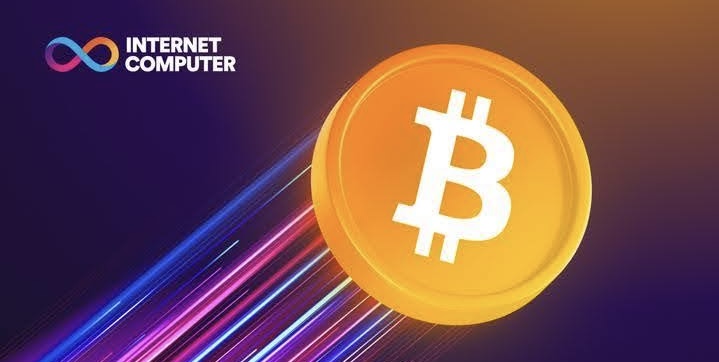The Internet Computer Protocol (ICP) has announced the successful integration of threshold-Schnorr signatures with onchain Bitcoin block headers, marking a significant step in its Deuterium milestone. This integration is set to revolutionize Bitcoin’s utility in the decentralized economy by enabling a range of new applications that were previously limited due to Bitcoin’s lack of native smart contract capabilities.
The integration of threshold-Schnorr signatures allows ICP smart contracts to interact directly with Bitcoin. This breakthrough means that smart contracts can now perform functions such as signing Taproot transactions and supporting decentralized finance (defi) applications. This technological advance is expected to boost Bitcoin’s compatibility across various platforms and applications, ushering in a new era of development within the Bitcoin ecosystem.

According to sources, this milestone will notably benefit emerging protocols such as Ordinal inscriptions and the BRC20 standard, both of which have already begun to significantly increase transaction activity on the Bitcoin network. Developers are now equipped with the necessary tools to craft more sophisticated and trustless applications on Bitcoin, harnessing the capabilities of ICP.
Lomesh Dutta, the Vice President of Growth at the Dfinity Foundation, shared his insights on this achievement, noting the importance of these developments for the future of Bitcoin and decentralized applications. “Most Bitcoin meta protocols, like Ordinals and BRC20, utilize Taproot transactions that rely on Schnorr signatures,” Dutta explained. “With threshold-Schnorr, or tSchnorr, ICP smart contracts can now natively sign Bitcoin transactions. This enables developers to explore a wide range of use cases, from creating defi lending markets backed by Ordinals to developing infrastructure like decentralized indexers.”
The enthusiasm for this new integration is palpable within the developer community, with many already adopting threshold-Schnorr signatures for their projects. The Dfinity Foundation expects this adoption to significantly accelerate further innovations and development within the Bitcoin ecosystem.
Beyond enhancing Bitcoin transaction capabilities, the integration also expands access to full Bitcoin block headers, a step up from the previous capability of handling only Bitcoin’s unspent transaction output (UTXO) set. This feature empowers ICP-based projects like Omnity Network and Bioniq to verify Bitcoin blocks independently, without the need for external services. This capability is pivotal in enhancing the trustlessness and security of operations across networks.
This milestone by ICP not only advances Bitcoin’s integration into the defi sector but also positions ICP as a major player in the ongoing evolution of Bitcoin’s role in the broader decentralized landscape. The Deuterium milestone is viewed as a critical step towards creating a more interconnected and efficient blockchain environment.
Threshold-Schnorr Integration: New Era for Bitcoin and Blockchain

The integration of threshold-Schnorr signatures into ICP’s framework represents more than just a technical update; it signifies a pivotal moment in the evolution of blockchain technologies. By enabling direct interaction between ICP smart contracts and the Bitcoin network, ICP is paving the way for a new era of innovation and security in the blockchain space. As this technology continues to develop and gain adoption, the potential for transformative applications appears boundless, promising an exciting future for developers and users alike in the expanding universe of decentralized finance.
For more news and updates on the general cryptocurrency market, stay tuned to DeyThere.


















































































































